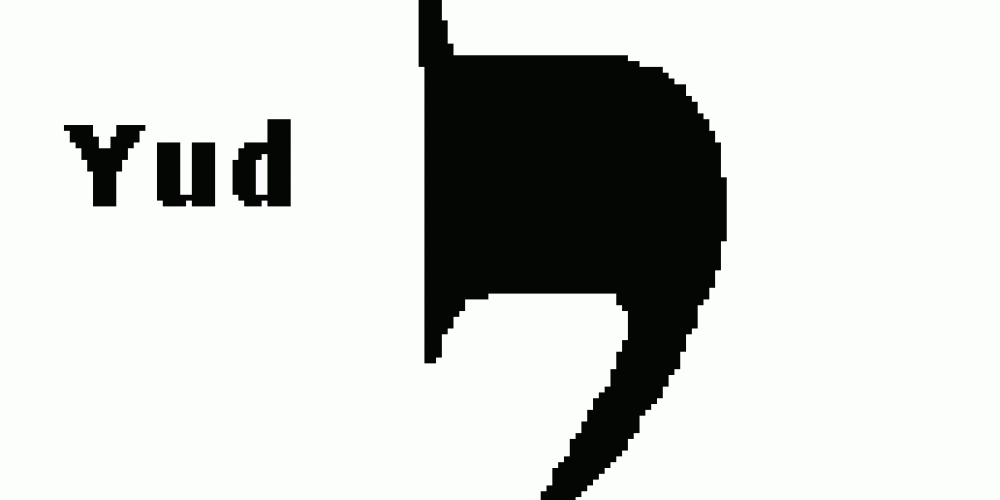
In 1878, Yehuda Leib Gordon published a poem, Kotzo shel yud, in which he pokes fun at the technicalities of halacha. In his poem, a young beautiful woman is destined to remain an agunah for her entire life as, after finally receiving a get from her faraway husband, it is deemed invalid because the husband's name is missing the tiny letter yud.
For those looking to criticize the technical details of the halachic system, something quite common amongst many (but not all) of the maskilim of the 19th century, there is much to complain about. But for those living in the 21st century, we understand how the minutest change, how the most technical of details can make all the difference. Yesterday, a pair of Canadian lugers failed to win an Olympic medal as they took five one- hundredths of a second longer to sled down some death defying track. To put that in perspective, the blink of an eye takes about seven times as long!
Try getting just one number wrong on your password or phone call, and see what happens. People enter or exit jail on all kinds of technicalities, and if there is something more technical than our tax codes, I would like to know what it is.
I was thinking of this as the Gemara (Sukkah 6b) discusses the minimum number of walls needed for a sukkah. The debate revolves around whether it is the written word or spoken word that takes precedence. The Torah uses the word sukkot three times in commanding us to sit in sukkot. While the word is pronounced in the plural, sukkot, twice the word is written in the singular, without the letter vav. Hence, the debate as to whether yeish aim lamikra or yeish aim lamasoret: is the "mother" of all interpretations that which is written, or that which is spoken? If the former, the Gemara asserts, a sukkah would need three and half walls; and if the latter, it would only need two and a half walls.
A few pages later, the Gemara (ibid 9b) suggests that one may sit in a sukkah even if that sukkah is underneath another sukkah. This is based on fact that the word sukkot is pronounced in the plural, implying that one may sit in two sukkot simultaneously. That view is rejected, as the actual spelling of the word sukkot relating to the mitzvah of sitting in a sukkah is written defective, without a vav[1].
By writing the word sukkot both with and without a vav, the Torah hints that one letter can make all the difference. But such is not always the case. While every letter of the Torah is of significance, having been spoken by G-d, not every letter, word, or phrase necessarily adds new meaning. Rabbi Yishmael (Brachot 31b) claims that the "Torah speaks in the language of people" which includes imprecision and repetition[2]. As Rashi notes on the verse "[and?] all that I command" (Shemot 25:22), the "vav is extra and superfluous"[3]. Our sages recognized that (sadly) "we are no longer expert in missing and extra [letters]" (Kiddushin 30a).
While technicalities have their place in all systems, including the halachic one, we must never lose sight of the bigger picture. It is for this reason Judaism rejects the notion that a computer can answer legal questions even if it has all the needed data. When people need halachic guidance, they need that guidance from real people who know them best, and can apply the technical details of halacha to the person before them. That ability to balance the technicalities of halacha with the fluidity of life is something that takes great wisdom. Let us pray our leaders are blessed with such.
________________________________________
[1] Tosafot notes that those who see the pronounced word as primary would agree that the written word is also of import, and agree that one may not sit in a sukkah beneath another one.
[2] These two approaches are seen in analyzing the many stories that repeat themselves. While many have distilled great meaning from the differences in the repetition of the story, others have ignored them, as no human will ever tell the same story over exactly the same way.
[3] Most interestingly, our Torah scrolls do not contain the letter vav, meaning that Rashi's Torah did differ from ours. I highly recommend Dr. Shnayer Leiman's monograph relating to this phenomenon.



